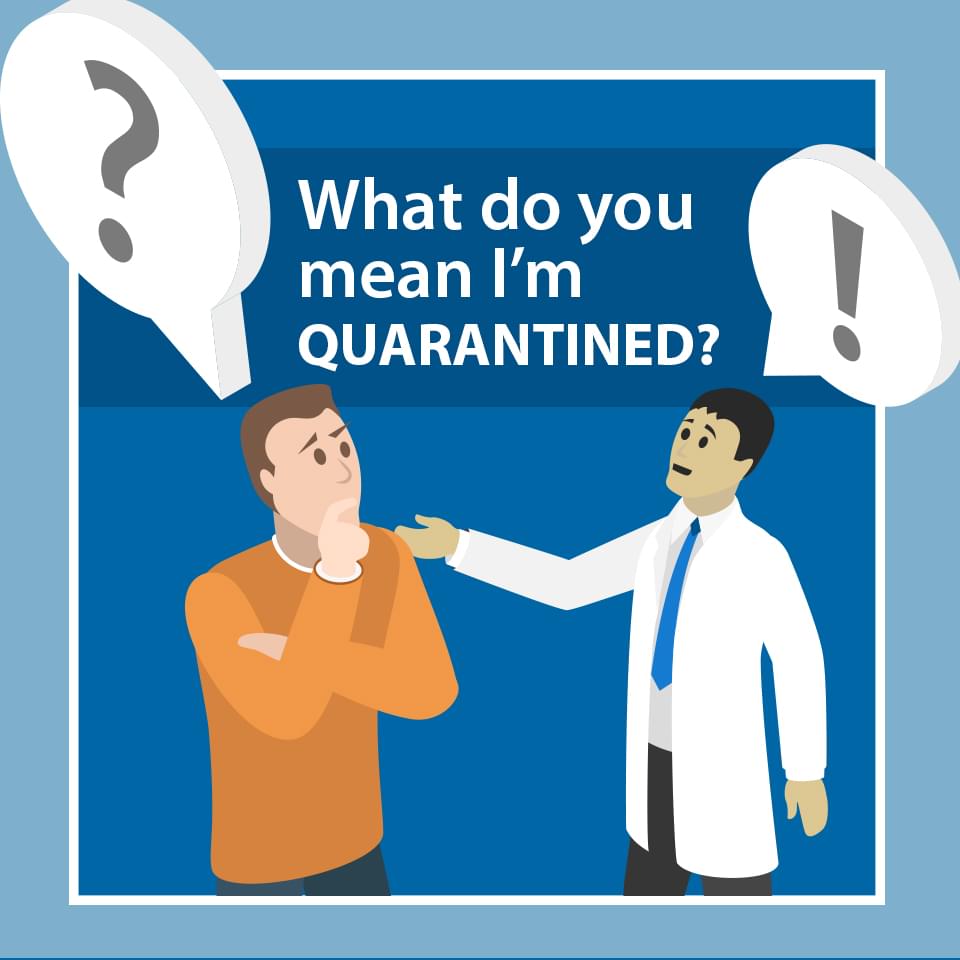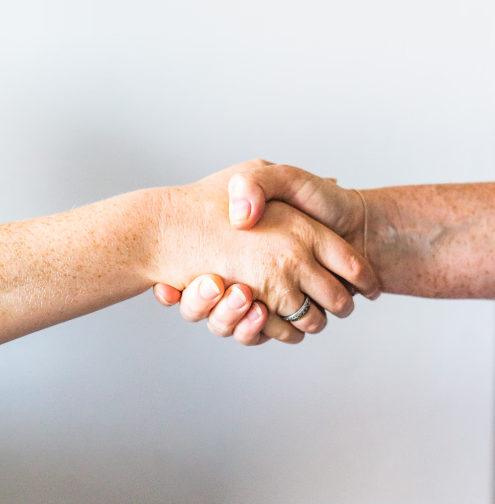What Do You Mean I’m Quarantined?

Social distancing, self-isolation, and quarantine. We have heard these terms used endlessly over the past five months as ways to protect ourselves and others from the spread of Coronavirus. If you or someone you know have tested positive for COVID-19 or been exposed, you have probably been instructed to follow these guidelines.
But what does each mean? And why are they effective? Understanding these self-protection measures and following the guidelines recommended by the U.S. Centers for Disease Control and Prevention (CDC), your local health department and Adena Health System can play a big role in keeping you and your loved ones safe in this critical time.
Social Distancing - Keep a safe distance to slow the spread
Social distancing, also called “physical distancing,” means keeping a safe space between yourself and others who are not from your household. To practice social or physical distancing, stay at least six feet, about two arms’ length away, from other people who do not live with you. It is important to maintain social distancing in both indoor and outdoor spaces.
Social distancing should be practiced in combination with other everyday preventive actions to reduce the spread of COVID-19. These include wearing a face covering, avoiding touching your face with unwashed hands, and frequently washing your hands with soap and water for at least 20 seconds.
Self-Isolation -Separate yourself from others if you have COVID-19
Self-isolation is used to separate infected individuals with the virus from people who are not infected. Self-isolation is used for two groups of individuals: (1) people with COVID-19 symptoms and are able to recover at home, and (2) people who have no symptoms, are asymptomatic, but have tested positive for COVID-19. People in isolation should stay home until it’s safe for them to be around others. In the home, anyone sick or infected should separate themselves from others by staying in a specific “sick room” or area and should use a separate bathroom, if available. They shouldavoid contact with other members of the household and pets, not share personal household items, like cups, towels, and utensils, and if using a common bathroom should clean and disinfect all surfaces every time. Sick individuals should also wear a cloth face covering when around other people in their home and should not go to public places.
When self-isolation ends and it is safe to be around others depends on various factors and situations. The CDC recommends individuals self-isolate for at least 10 days from the onset of symptoms, symptoms have improved and have experienced at least 24 hours with no fever without the use of fever-reducing medication.
Quarantine - Stay home if you believe you have been exposed to COVID-19
Quarantine is used to keep someone who might have been exposed to COVID-19 away from others. Quarantine helps prevent spread of disease that can occur before a person knows they are sick or if they are infected with the virus without feeling symptoms. People in quarantine should stay home, separate themselves from others, monitor their health, and follow directions from their state or local health department.
Why are Following These Guidelines so Important?
Positive cases for COVID-19 have been increasing recently across the state, and locally in Adena’s nine-county service region. From the onset of this global pandemic, the best methods to limiting the community spread of this deadly virus is by following the recommended guidelines for social distancing, self-isolation and quarantine. If you have been asked by your health care provider or local health district to self-isolate or quarantine due to testing positive or being exposed to COVID-19, it is of the utmost importance to follow all instructions to safely recover and limit further exposure among others.
Why does Self-Isolation and Quarantine last 14 Days? What If I Feel Better Sooner
Fourteen days is the overall length of time between exposure and the appearance of signs or symptoms. After this time period, the risk of passing the virus to someone else is very low or nonexistent. While you may not feel sick, and these safety measures may be an inconvenience in your daily life, eliminating the virus depends on people being responsible in avoiding the spread of COVID-19. Be mindful of members of your family and others in our communities who are more vulnerable to COVID-19, who could become seriously ill or even die. We are all in this together.
Should I Get Tested for COVID-19? What is the Cost?
Adena follows the Ohio Department of Health’s (ODH) criteria for testing people for Coronavirus. If your symptoms and/or condition do not meet the testing criteria set by the ODH, there may be a charge for COVID-19 testing. It is recommended that that people look at the current ODH testing criteria, and should check with their health care carrier or insurance provider to understand any associated testing costs.
If an individual is ill and believes they have some COVID-19 symptoms, but not all listed by ODH, they may not meet the ODH testing criteria. Some symptoms of Coronavirus can be similar to a cold, flu or other common viral illnesses. As with any illness, if symptoms are not severe you should stay home and treat your illness as you normally would. You may also call Adena’s COVID-19 Hotline at 740-542-SAFE (7233) for a phone screening. However, if you have chest pain, shortness of breath, dizziness, a severe headache or other potentially life-threatening problems, go to the nearest emergency department or call 911. Please notify the 911 dispatcher or the emergency department of your COVID symptoms PRIOR to arrival.
Stay Informed
For more ways to protect yourself and others from Coronavirus, visit adena.org/togetherwecanstayhealthy.
Because this is a new virus, information about COVID-19 is constantly evolving. For the latest information, the following websites are available with the most up-to-date information:
- CDC - cdc.gov/coronavirus
- Ohio Department of Health - coronavirus.ohio.gov
- Adena Health System - adena.org/COVD19
- Ross County Health District - rosscountyhealth.org

